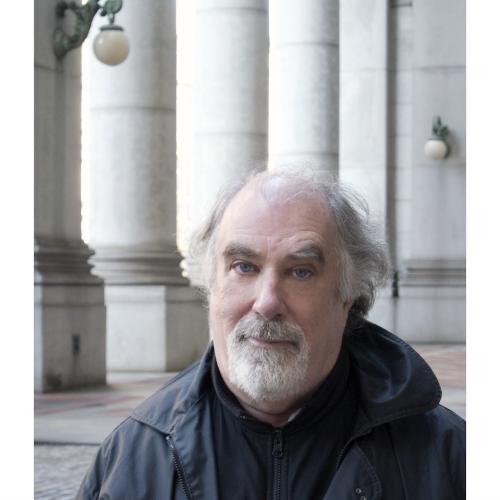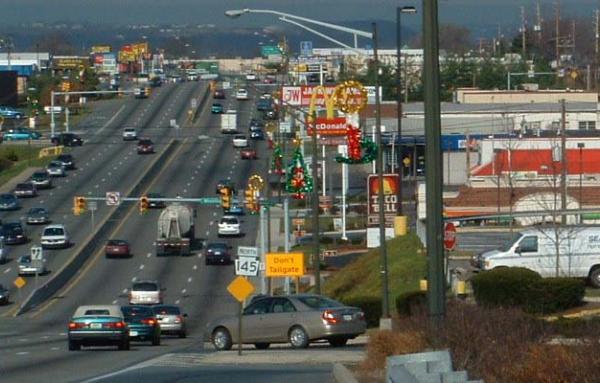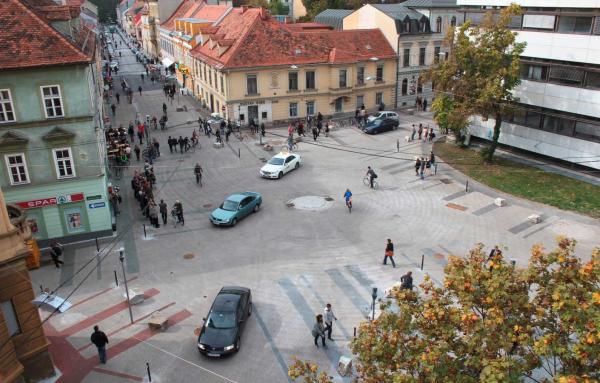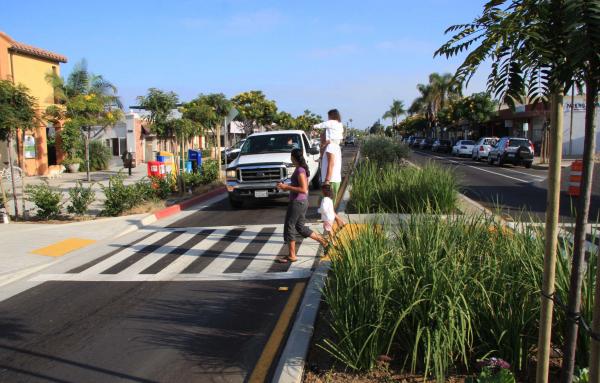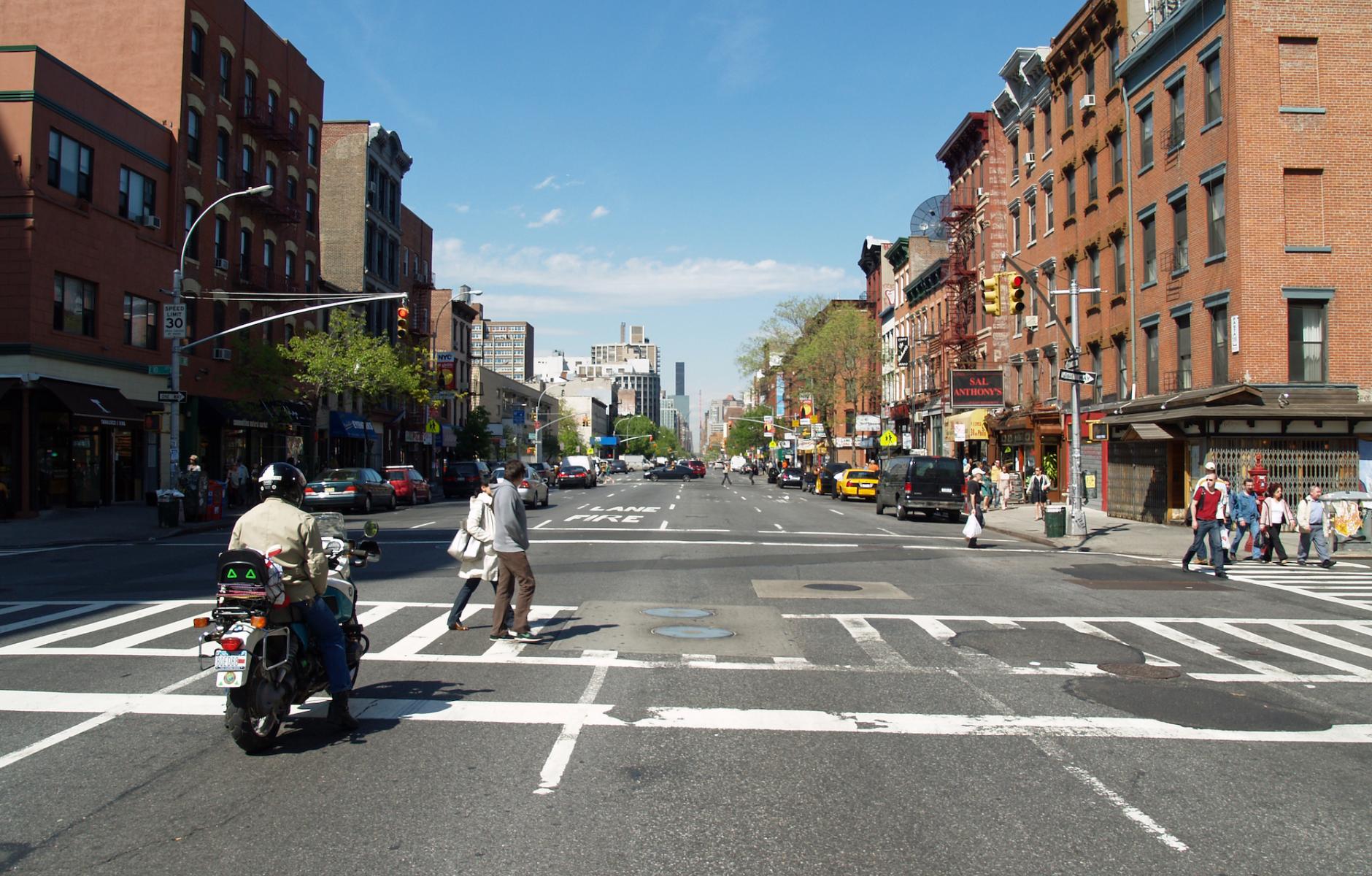
A city street is a terrible thing to waste
ovember 13th—Friday the 13th—marked the 13th day in a row that a pedestrian died on a New York City Street, all killed by cars or buses going too fast. These fatalities occurred because despite all the progress New York has made since Mayor de Blasio and his DOT Commissioner Polly Trottenberg signed the Vision Zero Pledge in December 2013 (more on this below), most of our city streets are still seen primarily as transportation corridors for cars and trucks.
Until we prioritize pedestrian safety over traffic flow, we will never get to zero deaths for pedestrians, cyclists, drivers, or their passengers. But the good news is that when we do make streets that are safe for pedestrians, traffic still flows—and it becomes easy to design streets where people can want to get out of their cars and walk, enjoying public life. Which, after all, is what city life is all about. We don’t have to choose between pedestrian plazas in Times Square and suburban-style arterials. We can have our cake and eat it too.


A little history is relevant here: for decades, our city streets have been controlled by the DOT—the Department of Transportation— which employs traffic engineers and transportation planners who have traditionally seen their job as making traffic flow quickly and safely. They use a Federal grading system that grades street quality according to the “Level of Service” (LOS)—a measurement of how well traffic moves.
Anything that impeded traffic flow was a problem to be identified and eliminated. Trees became known as Fixed Hazardous Objects (FHOs), because they damage cars that hit them. Standard practice in traffic engineering is therefore to confine trees to a Vegetative Containment Zone kept away from the vehicles.
People are called MHOs—Moving Hazardous Objects. They also slow down and damage cars that hit them, and so they’re kept away from the cars too.
Of course it wasn’t always like this. The change to an era dominated by the automobile began roughly 100 years ago, when the group that the historian Peter Norton calls “Organized Motordom”—a consortium of car companies, oil companies, road contractors, and even AAA—realized that increasing car sales depended on getting people out of the way of the cars. People were used to walking wherever they wanted, and one American city responded to the new safety threat by requiring cars to be preceded by a man on foot carrying a flag, to warn bystanders that a car was coming.
The Ford Model T went into mass production in 1908, however, and within 10 years American cities had ceded control of city streets to cars. For the first time, people on foot had to stand at the corner and wait for a traffic light to let them cross. Organized Motordom popularized a new meaning for the word “jaywalking,” which had previously referred to a country bumpkin walking in the city, and persuaded cities across the country to pass anti-pedestrian jaywalking laws.
One-hundred years later, the tide started to go the other way in New York City: Mayor Bloomberg’s DOT Commissioner, Janette Sadik-Khan, led a revolution in the way we use our streets, building hundreds of miles of bike lanes and a number of new pedestrian plazas. In places like Times Square and Madison Square the DOT took street space away from cars and gave it to the pedestrian. Since 80% of Manhattanites don’t own cars, and 80% of Manhattan workers don’t travel to work by private car, most New Yorkers loved this.
Sadik-Khan was able to make that radical change because DOTs all over the country have absolute control of our streets. But of course most state and local DOTs worked to make driving better. The Federal DOT handed out enormous sums for local DOTs to rebuild streets to Federal Level of Service standards. Traffic flow went up, and pedestrian safety went down. We now have a system where Americans drive everywhere for everything, and we consider it normal that we have 30,000-40,000 traffic deaths every year.
The De Blasio administration’s Vision Zero Pledge was another major step forward, a landmark decision in the history of American towns and cities. It officially announced a bold new standard for measuring the performance of our streets.
Vision Zero began in Sweden, where traffic engineers recognized that there are only two ways to reduce traffic deaths to zero: either slow the cars way down, or separate the people from the cars. No pedestrians are run over on limited-access highways, because there are no pedestrians there.
Anyone who visits American sprawl sees how thoroughly modern engineering separates cars from the people on many new roads. But while the idea is to make traffic flow like water, the reality is that when everyone drives everywhere we eventually cannot build roads big enough for all the traffic, and many roads become more like auto sewers than efficient pipes.
In New York City, Mayor Giuliani built metal fences in midtown to keep people from crossing anywhere but at the intersections, but it turned out that was not safe, because the fences made drivers think it was safe to go faster, and going faster meant that pedestrians hit at the intersections were more likely to die.
When I was a kid, Manhattan’s avenues were two-way, which makes cars go more slowly. DOTs told us one-way streets were safer, but they meant “safer for the cars to go faster.” In fact, making cars go faster is always worse for pedestrians, for three reasons: 1) a pedestrian hit by a car going 30 miles per hour is 8 times as likely to die as a pedestrian hit by a car going 20 miles per hour, and a pedestrian hit by a car going 40 miles per hour is 17 times as likely to die; 2) a driver going 20 miles per hour sees three times as much as a driver going 40 miles per hour; and 3) a driver going 20 miles per hour has more time to react and can stop in approximately one-third the distance of a driver going 40 miles per hour.


Now we know that Vision Zero advocates are right: to stop pedestrian deaths on city streets, we must slow cars down. Even with the protected bike lanes, the improved one-way suburban-style arterials we are building now will never get us to zero traffic deaths. The turn lanes on the new arterials are dangerous for pedestrians and cyclists, and although we have a new 25 mile per hour speed limit, the traffic cameras don’t give out speeding tickets until 36 miles per hour. The protected bike lanes (which prevent the bikes from becoming MHOs), even combine with the turn lanes, bright striping, and bold graphics to make drivers very comfortable going 35 mph and faster. Getting to zero will require that traffic on most streets goes 20 mph or slower, as it does in the most advanced European cities. Speeding in cities is the new drunk driving.
When we slow the cars down to 20 or below, we no longer have to build auto sewers. Because the sole purpose of almost all the ugly detritus of modern roads is to make it safer for cars to go faster, and traffic engineers like the great Hans Monderman in Holland have proven that one of the best ways to slow cars down and save lives is to simply remove the striping, warning signs, stop lights and plastic sticks. Suddenly we can make beautiful streets where people want to get out of their cars and walk.
This piece also ran on City Limits. Used with permission.




